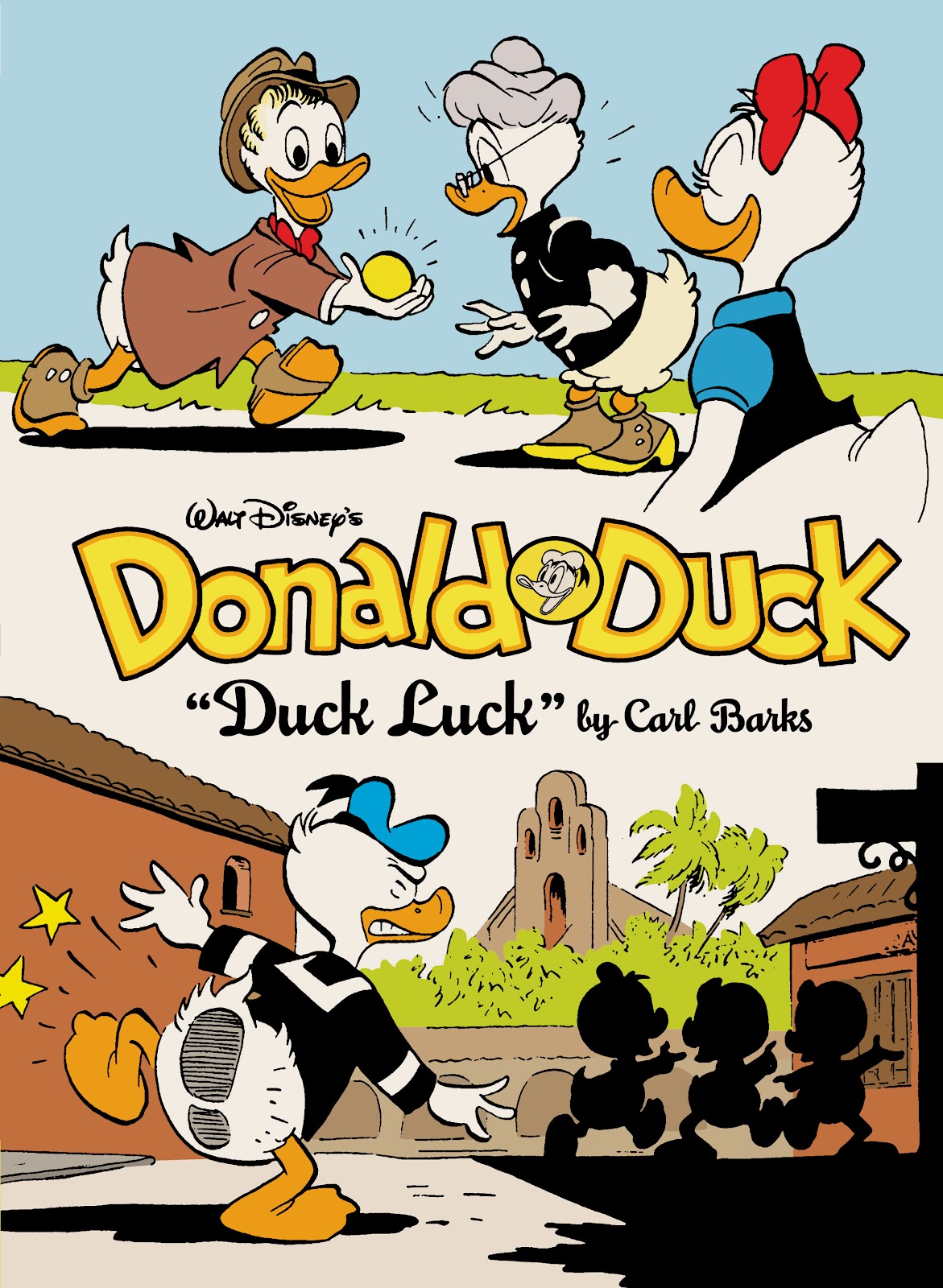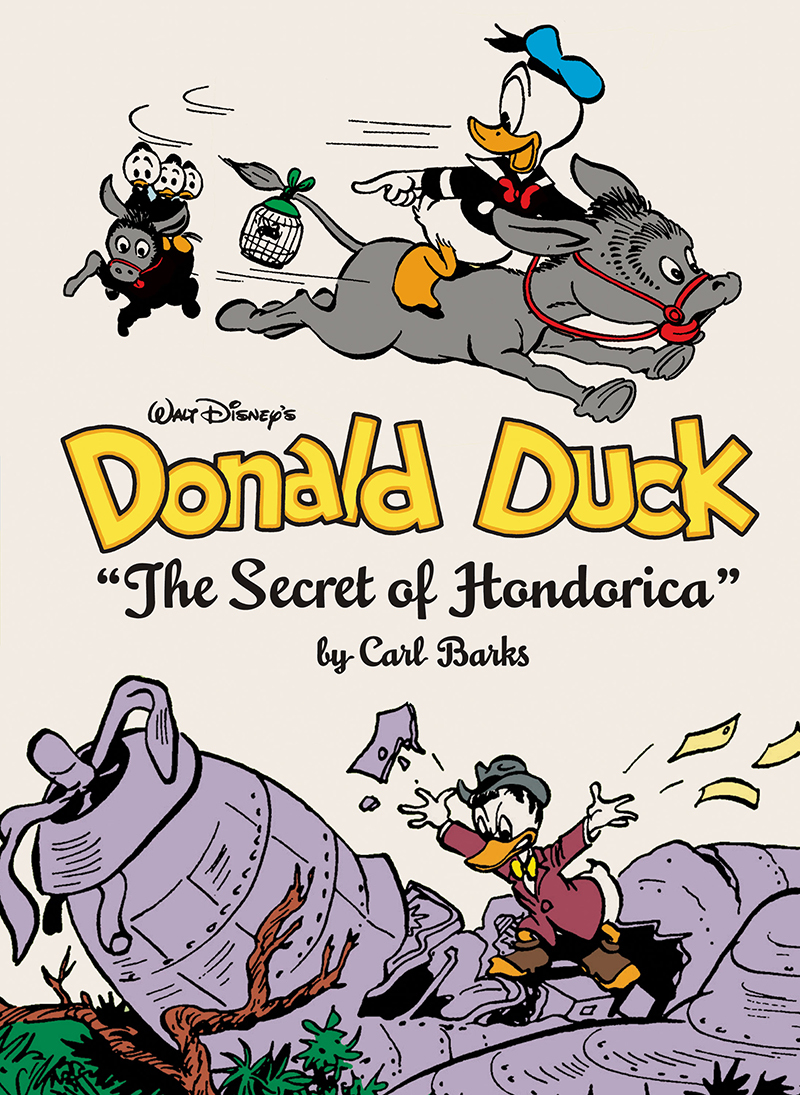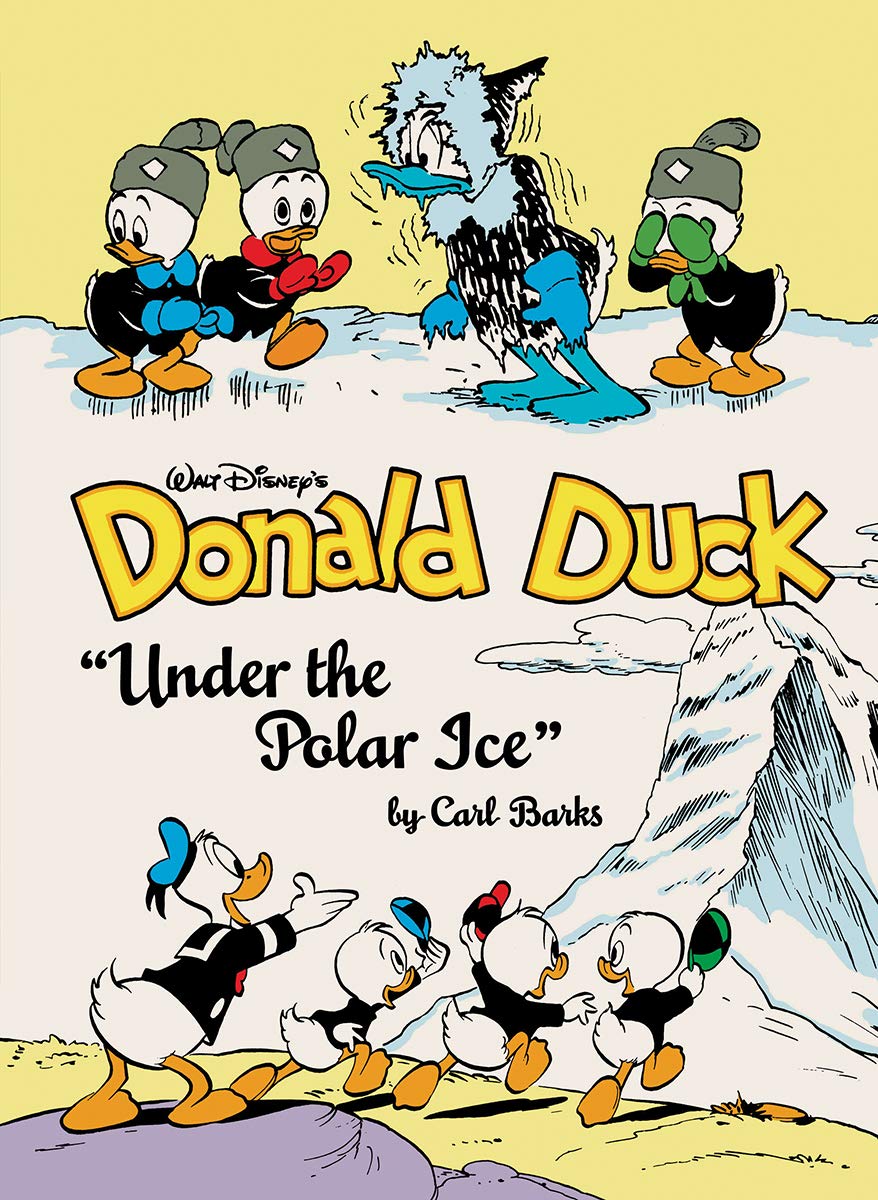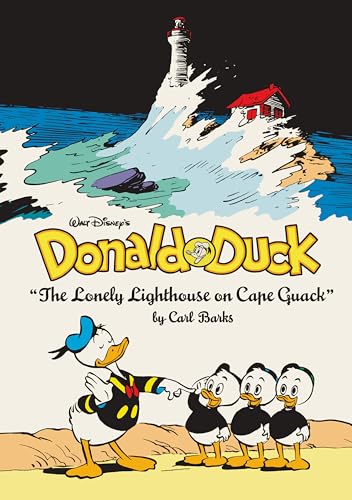
Part of Series
In this collection of world-famous Disney comics stories, Donald Duck decides to enlist Gladstone Gander and his unfailing good luck to prove a fortune cookie wrong when it warns, "You can't do anything right today." (Good luck with that!) Next, it's off to the roaring North Seas, on one of Uncle Scrooge's schooners, where Donald and the boys compete to bring in the most fish. But they're falling behind—until Donald unlocks Scrooge's "Secret Device." Then Donald gets into trouble when Gyro invents a matter transmitter that only half works. And Donald and the boys, while on a trip to the Grand Canyon (to expose a fraud), get captured by cavemen! Plus: Daisy Duck strikes a blow for women's equality when she and her nieces climb Precipice Peak—a feat that no man has ever dared! Also in this volume—Carl Barks' stories of the Junior Woodchucks starring Huey, Dewey, and Louie, written and penciled by Barks with finishes by internationally acclaimed Duck artist Daan Jippes! Carl Barks delivers another superb collection of surprise, delight, comedy, adventure, and all-around cartooning brilliance: 200 pages of story and art, each meticulously restored and newly colored with insightful story notes by an international panel of Barks experts.
Author

Carl Barks (March 27, 1901 – August 25, 2000) was an American Disney Studio illustrator and comic book creator, who invented Duckburg and many of its inhabitants, such as Scrooge McDuck (1947), Gladstone Gander (1948), the Beagle Boys (1951), The Junior Woodchucks (1951), Gyro Gearloose (1952), Cornelius Coot (1952), Flintheart Glomgold (1956), John D. Rockerduck (1961) and Magica De Spell (1961). The quality of his scripts and drawings earned him the nicknames "The Duck Man" and "The Good Duck Artist". People who work for Disney generally do so in relative anonymity; the stories only carry Walt Disney's name and (sometimes) a short identification number. Prior to 1960, the creator of these stories remained a mystery to his readers. However, many readers recognized Barks' work and drawing style, and began to call him the Good Duck Artist, a label which stuck even after his true identity was discovered by John and Bill Spicer in 1959. After Barks received a 1960 visit from Bill and John Spicer and Ron Leonard, he was no longer anonymous, as his name soon became known to his readers. Writer-artist Will Eisner called him "the Hans Christian Andersen of comic books." In 1987, Barks was one of the three inaugural inductees of the Will Eisner Comic Book Hall of Fame. (From wikipedia)


